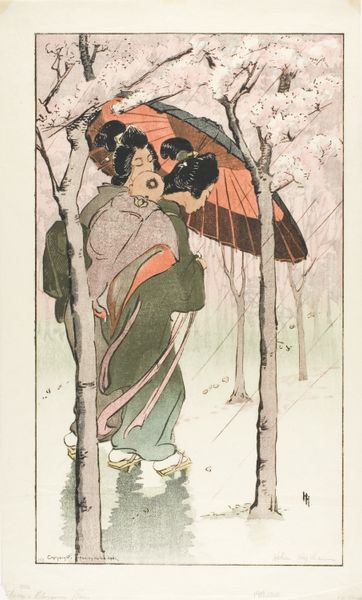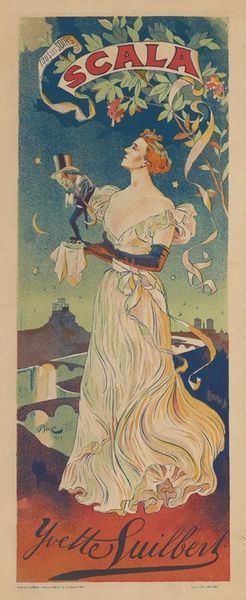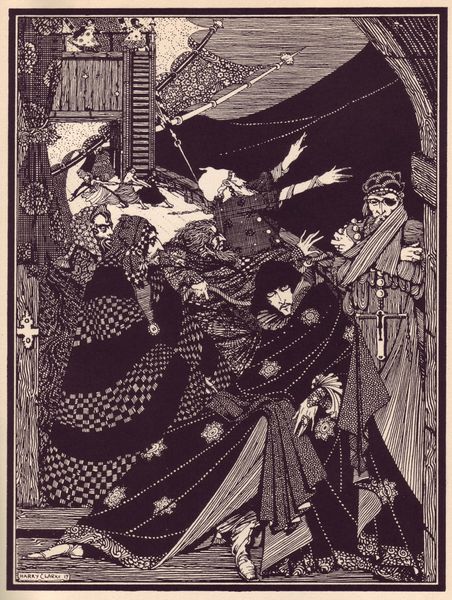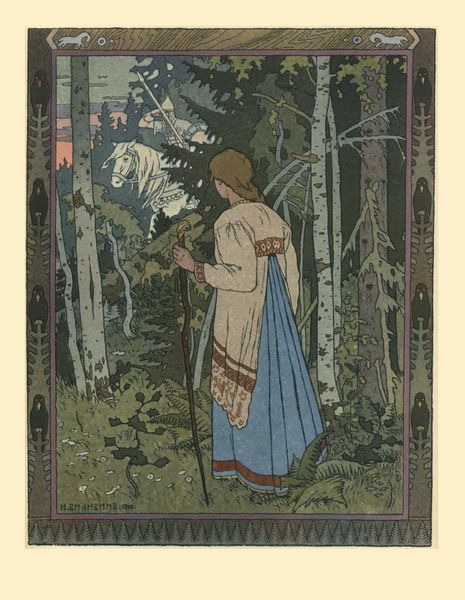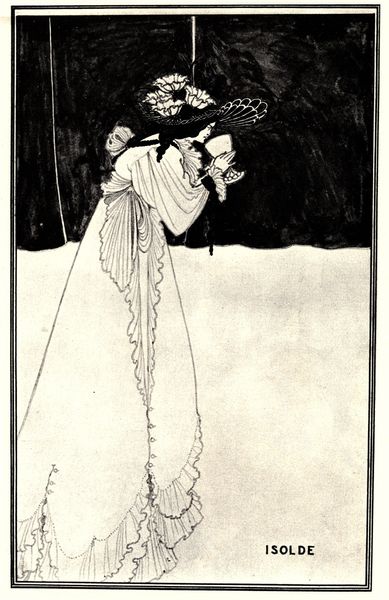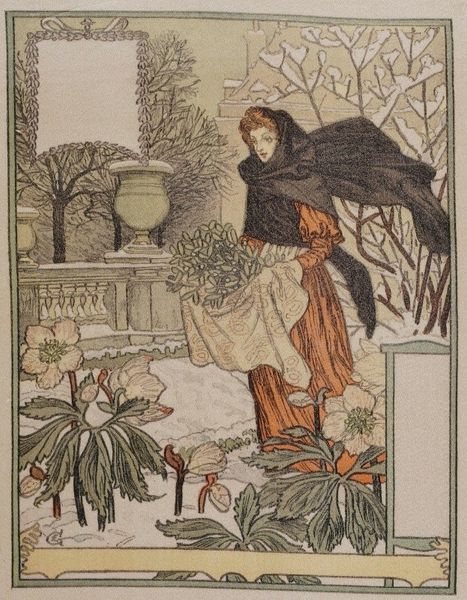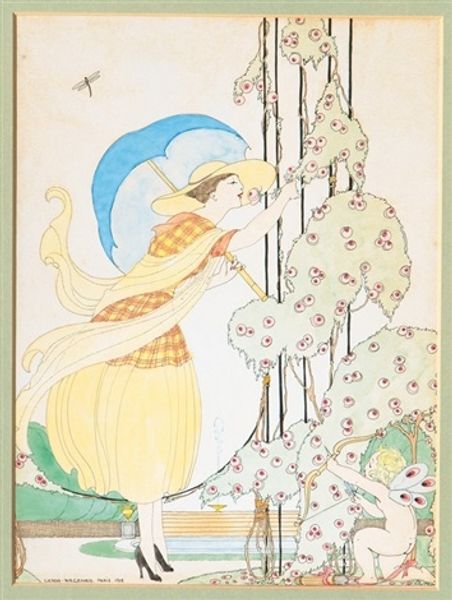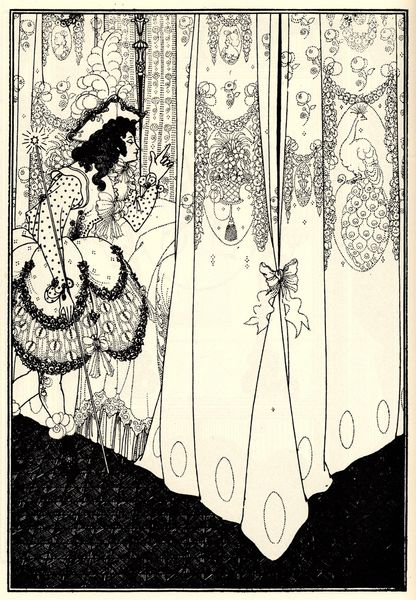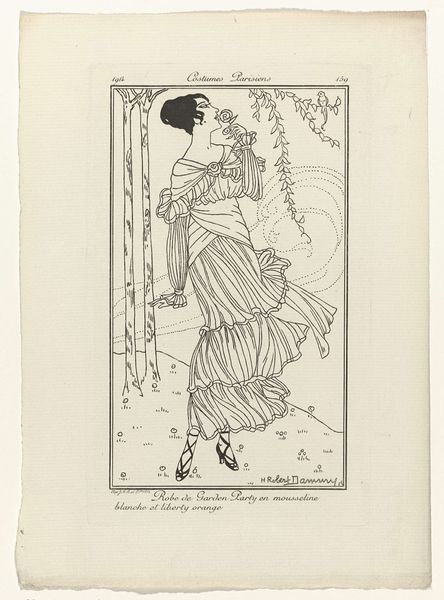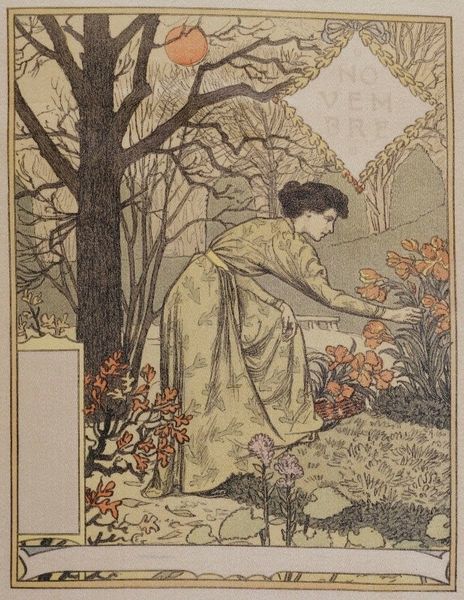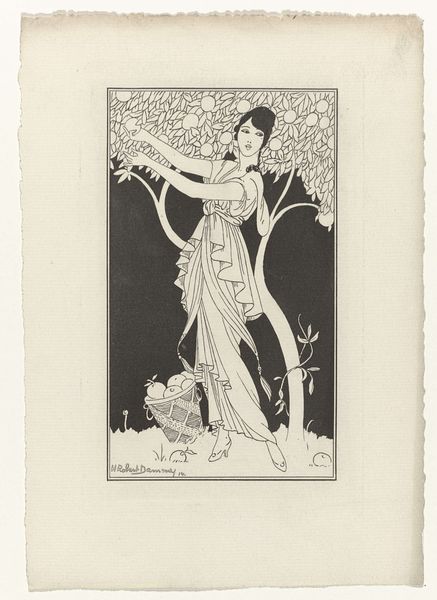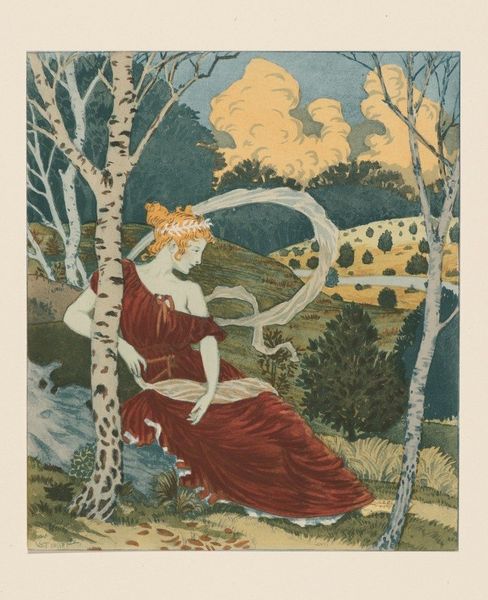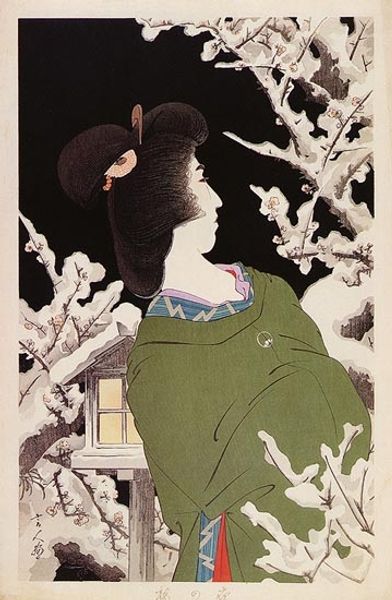
drawing, ink, pen
#
pen and ink
#
drawing
#
art-nouveau
#
narrative illustration
#
pen illustration
#
landscape
#
figuration
#
ink
#
symbolism
#
pen
Copyright: Public domain
Curator: This is "The House of Trees and Other Poems," a pen and ink drawing by Ethel Reed from 1895. What do you make of it? Editor: It has a somber, almost melancholy quality, don't you think? The restricted color palette—mostly greens and creams—enhances this subdued mood, and the graphic simplicity suggests flatness even within a dense composition of repetitive branches. Curator: Ethel Reed was a key figure in the American Art Nouveau movement. The figure draped in flowing fabric is reminiscent of stylized medieval depictions of allegorical figures like Melancholia or Luxuria. And notice the deliberate positioning of the woman within this almost stage-like forest space. This hints at a very personal journey into symbolic landscapes, what Carl Jung called an "inner world" or "psyche" – an allegorical space that exists inside her own mind. Editor: The stylistic reduction is intriguing. The foliage is detailed with many spindly vertical lines. And the solid block of green that constitutes her cloak has an almost non-narrative weight, flattening her even more into this pattern. How does that linearity relate to the symbolist nature you describe? Curator: The Art Nouveau style frequently incorporated symbolic elements drawn from mythology, spiritualism, and personal experience. The repeated, almost rhythmic use of the branches—reaching upwards but visually tangled—could symbolize barriers and transcendence through creativity. Her body appears to morph into the land, her identity blurred between her outer world of daily experiences and the richer world of poems and the human psyche. The house of trees is her mind. Editor: That blending creates a pictorial ambiguity. Her simplified face seems almost passive, turned away into the graphic field, mirroring the faceless dandelion heads that are cropped and flattened by the frame’s edge. Her connection to the land is so profound, she ceases to be a focal point. Curator: Exactly! The piece evokes themes that endure: the power of art to transform inner turmoil and nature's mirroring of our emotional lives. The dandelions could symbolize healing, rebirth, or simply ephemeral beauty, connecting the artwork back to wider anxieties around social issues of the late 19th century, such as industrialisation. This cover then acts as a kind of invitation to lose yourself in Ethelwyne Weatherald's book of poetry. Editor: That all suggests that the success here is due to a balance: simplification without losing evocative nuance, figuration merged into almost pure abstraction. It's surprisingly sophisticated, given its pared-down formal approach.
Comments
No comments
Be the first to comment and join the conversation on the ultimate creative platform.
